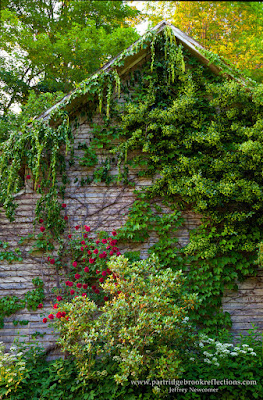It's not easy being green
Susan and I are rushing around getting ready to head out a trip to Yellowstone, the Tetons, and Columbia River Gorge, so this week's blog will, hopefully, be short. Just a couple of techniques, one in the camera and one during processing, to improve your images of our most abundant natural attraction, foliage.

If there is one thing that we have in abundance in New England, it is leaves. In the spring, they explode with every imaginable shade of green, and mature during the summer to a lush, swaying umbrella, deflecting the summer heat. Of course the fall provides our all-to fleeting, riotous, celebration of color initially in the trees and then as a luxurious carpet until the winter snows allows us to catch our breath. Leaves contribute a limitless palate of colors and shades to landscape photography, but their brilliance is opposed by one pernicious factor, reflection.
When light reflects off the surface of the leaves the brilliant colors
 |
| Unpolarized |
You Must Have a Polarizer
 |
| Polarized, Unprocessed |
glare is related to the direction of the light, being most effective when it is at 90 degrees to the subject. On the other hand, when the
 |
| Polarized Processed |
Shadow / Highlight
The Shadow/Highlight function (H/S) is found in newer versions of
 |
| Unpolarized processed with Shadow/Highlight |
 |
| Shadow / Highlight Tool |
Now back to packing. I will try to post some images over the next couple of weeks as our travel allows.


This post is informative for me and all other readers.RH Stamps
ReplyDeleteGood stuff. It is interesting to read comments.
ReplyDeleteI truly love your site.. Great colors & theme.
ReplyDeleteDid you make this amazing site yourself? Please reply
back as I’m hoping to create my own personal website and would love
to know where you got this from or just what the theme is called.
Many thanks! 토토